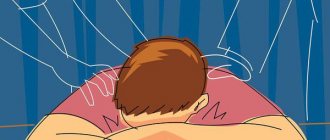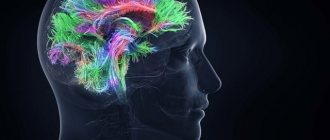Personality disorder or psychopathy is a disorder of a person’s mental activity, characterized by disharmony in the development of certain aspects of the personality. The first inconsistencies with generally accepted norms in behavior can be visible already at an early age. They become more noticeable during puberty, and over the years the symptoms become more pronounced.
Psychopathy is considered a kind of borderline state, bordering between health and disease. It is seen as a painful deviation from the norm, but is not a mental illness. Personality disorders have many types and forms, so treatment is selected individually, taking into account clinical characteristics.
Causes
According to statistics, about 12% of the population suffers from personality disorders. The reasons for their occurrence are ambiguous in most cases. The main predisposing factors to the development of mental disorders are of a genetic nature - the presence of mental illnesses, alcoholism, personality disorders in parents or close relatives.
In addition, the development of personality disorders can occur as a result of traumatic brain damage before the age of 3-4 years. Also, social factors can play a leading role in the emergence of this kind of pathology - inadequate upbringing of a child in the event of the loss of parents or in a family suffering from alcoholism. Violations arise against the background of inflicted psychological trauma - intimate abuse, manifestations of sadism, moral cruelty towards a child.
At first, the manifestations of the pathology have a clear picture, but with age, the symptoms have no specific boundaries and are reflected in all areas of life.
Etiology and pathogenesis
The reasons have not been reliably identified to date. There are diametrically opposed points of view, according to one of which sociopathy is a hereditary disease or a consequence of a genetic defect (possibly a mutation), according to the other, the reasons for the development of sociopathy in an individual lie exclusively in problems of upbringing and social environment. Most psychologists take an intermediate position on this issue, leaning in one direction or another depending on their beliefs. The presence of concomitant mental disorders (psychosis, schizophrenia, mental retardation), as well as a history of traumatic brain injuries, can have a significant impact.
Symptoms
Personality disorder is characterized by alternating periods of social compensation and decompensation.
Compensation is manifested by the individual’s temporary adaptation to society. During this period, a person does not have problems communicating with people around him, and personal deviations are hardly noticeable. During decompensation, pathological personality traits become pronounced, which contributes to a significant disruption of the adaptive capabilities of social interaction.
This period can take either a short period of time or last for a long time.
Personality disorders during exacerbation may be accompanied by symptoms such as:
- distortion of perception of reality;
- a feeling of emptiness and meaninglessness of existence;
- hypertrophied reaction to external stimuli;
- inability to establish relationships with other people;
- asociality;
- depression;
- feeling of uselessness, increased anxiety, aggression.
The diagnosis of “Personality disorder” can be made only if there is a triad of Gannushkin-Kerbikov criteria for psychopathy, which includes the totality of personality disorders, the severity of the pathology, as well as the relative stability of the individual’s condition.
Literature
- McWilliams, Nancy. Psychoanalytic diagnosis: Understanding personality structure in the clinical process = Psychoanalytic diagnosis: Understanding personality structure in the clinical process. - Moscow: Class, 1998. - 480 p. — ISBN 5-86375-098-7.
- Byrne, Eric. Introduction to psychiatry and psychoanalysis for the uninitiated = A Layman`s Guide to Psychiatry and Psychoanalysis (1968). - Minsk: Potpourri, 2006. - 528 p. — 5,100 copies. — ISBN 978-985-15-0236-9.
- Psychopathy (specific personality disorders) - treatment, diagnosis, symptoms (Russian) (html) (inaccessible link - history). MedicineLib.ru. Retrieved July 6, 2009. Archived from the original on May 15, 2007.
- Bednenko, Galina. Psychopathy (sociopathy) in culture and everyday life (Russian) (html). MAAP.ru. Retrieved July 6, 2009. Archived from the original on May 19, 2012.
- Robert D. Hare. Devoid of conscience. The frightening world of psychopaths = Without Conscience. The disturbing world of the psychopaths among us / translation by B. L. Glushak. - Williams, 2007. - 288 p. — 5000 copies. — ISBN 978-5-8459-1103-2.
Schizoid personality disorder
Persons suffering from this type of pathology are characterized by excessive isolation, emotional detachment, and sociopathic tendencies. They do not need contact with people, prefer a solitary lifestyle, and most often choose work with the possibility of minimal communication.
When interacting with others, such people experience internal discomfort, a feeling of uncertainty, tension, and therefore avoid establishing trusting relationships and do not have close friends.
Patients with this diagnosis show interest in everything unusual, have non-standard views on things and well-developed logical thinking. They are also characterized by a passion for various philosophical problems, ideas for improving life, and exact sciences.
People suffering from this type of disorder often achieve excellence in mathematics or theoretical physics, have musical talent, and also the ability to establish unexpected patterns.
Story
Early descriptions of addicted people were often derogatory. In the writings of 19th-century psychiatrists, the passivity, ineffectiveness, and excessive obedience that characterized these patients were seen as failures of moral development, and terms such as "helpless," "weak-willed," and "degenerates" were used to describe these individuals. Although the overly dependent personality type was noted quite often, such a diagnosis was not included in the earliest classification systems.
The early theorists of psychoanalysis took a completely different point of view. Both Freud and Abraham described the "oral-receptive" character as the result of either overindulgence or deprivation during the oral, or infantile, stage of development. Abraham (1924/1948) stated: “The dominant belief among some people is that there will always be some kind person—a mother substitute, of course—to care for them and give them everything they need. This optimistic belief condemns them to inaction... They make no effort and in some cases even consider it beneath their dignity to earn their bread.”
The precursor to the diagnostic categories of passive-aggressive and dependent personality types was the World War II concept of “immature response,” defined as “a neurotic-type reaction to the normal stress of war, manifested by helplessness or inappropriate reactions, passivity, obstructionism, or outbursts of aggression” (Anderson , 1966, p. 756). Dependent personality was mentioned only briefly in the DSM-I (APA, 1952) as a passive-dependent subtype of passive-aggressive disorder characterized by inappropriate attachment due to environmental frustration. The concept of “dependent personality” was completely absent from the DSM-II (APA, 1968), and the closest category was the maladaptive personality, characterized by “ineffective responses to emotional, social, intellectual, and physical stimuli. Although the patient does not appear physically or mentally ill, he is maladjusted, slow-witted, lacks judgment, is socially unstable, and lacks physical and emotional stamina.”
Paranoid disorder
Personality disorder of the paranoid type is characterized by increased distrust, pathological suspicion, and an exaggerated perception of injustice towards one’s own person. Patients with this diagnosis tend to see negative intent in everything, constantly feel a threat from the outside, and attribute negative intentions to others.
A paranoid person is characterized by increased confidence in his own importance, does not recognize that others are right, and is convinced of his own infallibility. Such a person is extremely sensitive to criticism addressed to him and interprets any actions and words of others in a negative way.
In a state of decompensation, the clinical picture is complemented by pathological jealousy, a craving for constant disputes and proceedings, and aggression.
Dissocial disorder
Pathology is manifested by an indifferent attitude towards the feelings of others, irresponsible behavior, and disregard for social rules and responsibilities. Individuals with this diagnosis are characterized by behavioral non-compliance with social norms; they are characterized by open confrontation with the outside world and a criminal predisposition.
In childhood, the characteristic features of such individuals are increased conflict, lack of desire to learn, and opposition to any established rules. During puberty, persons suffering from this pathology show a tendency to theft, hooliganism, and frequent running away from home.
An adult with a dissocial disorder has no spiritual values, is unable to experience warm feelings, and blames everyone but himself. Such people assert themselves at the expense of the weak, do not feel pity, have sadistic tendencies, and are aggressive in bed.
Diagnostics
Antisocial disorder is diagnosed when at least 3 of the following are present:
- callousness and indifference to other people, inability to show empathy;
- regular and persistent irresponsibility, disregard for social norms and rules, responsibilities;
- inability to maintain long-term and close relationships, but at the same time good ability to make acquaintances and establish contacts;
- instability to frustration, low threshold of aggression and violence;
- inability to realize one’s guilt and learn from one’s mistakes, inability to draw conclusions from punishments;
- blaming other people, justifying one’s behavior (inventing good intentions), leading to conflicts;
- constant irritability.
Hysterical disorder
This kind of disorder occurs in 2-3% of the population, most often in females. This type of mental disorder is characterized by theatrical manifestation of emotions, frequent mood swings, shallow perception of phenomena, and inconsistency in attachments. Such people love increased attention to their person, so they try in every possible way to achieve this.
Patients with hysterical disorder are overly concerned with their appearance, strive for ostentatious external brilliance, and need constant confirmation of their irresistibility.
When building personal relationships, individuals with this diagnosis put their own interests first and try to achieve their goals at the expense of others through manipulation. They are painfully aware of the indifferent attitude of others.
Obsessive-compulsive disorder
This type of disorder is characterized by increased caution, a tendency to doubt, a desire to keep everything under control, and obsessive thinking. People suffering from this type of personality disorder strive for perfection in everything, which greatly interferes with the completion of the task itself. They are overly conscientious, scrupulous, too pedantic and demanding of themselves and others.
Such patients are convinced that only their lifestyle and concepts are correct, and therefore demand that others conform to their ideas. Often, these individuals develop obsessive thoughts and peculiar rituals, expressed in the constant need to count objects, repeatedly check whether household appliances are turned off, whether the entrance doors are closed.
The financial side of life plays a special role for such people. They are overly frugal in spending, which they also demand from others; money is perceived as something that needs to be put aside in case of a global catastrophe.
During the period of compensation, individuals with this diagnosis are distinguished by reliability, pedantry, and correctness in communication. During decompensation, they are bothered by a growing feeling of anxiety, due to which the patient becomes irritable, remains in a gloomy state, and has hypochondriacal tendencies.
Related Issues
Antisocial psychopaths are impatient and irritable. It is difficult for them to voluntarily keep their attention on one thing. As a result, they have significant difficulties with learning and are not inclined to systematic work. They may often criticize others, but never themselves; prefer to attribute their mistakes to circumstances and others. Sociopaths are also often unaware of their emotions, especially negative ones, and essentially experience them. This is due to the fact that they have a highly developed “reaction”.
The personality traits of antisocial psychopaths often lead them to commit crimes and, as a result, end up in prison, but they never regret committing a crime, only that they got caught doing it. They can also realize themselves as leaders of sects, criminal and fraudulent groups. They often become drug addicts or abuse alcohol, but not so much because they avoid reality, but because they indulge their desires.
Anxiety disorder
This type of pathology is accompanied by a constant feeling of anxiety, unpleasant premonitions, and low self-esteem. Such people try to avoid any contact with people, considering themselves socially inferior and personally unattractive. They are too shy, indecisive, and often lead a reclusive lifestyle.
Individuals with an anxiety disorder are pathologically afraid of criticism in their direction; they are hypersensitive to any negative assessments, and therefore try to avoid social and professional activities.
As a rule, people with this diagnosis adapt well to society, since in most cases the environment is sympathetic to the problem of such a person.
Narcissistic disorder
A clear manifestation of this kind of disorder occurs in adolescence. Patients experience an increased need for admiration from others, exaggerate their own importance in society, and do not accept critical judgments.
The main character traits of such individuals are complete conviction of their own greatness and the need to indulge all their whims. They are convinced of their superiority over other people, have an inflated opinion of their talents and achievements, and are absorbed in fantasies about their successes. They need increased attention and are focused exclusively on themselves.
Narcissistic individuals are clever exploiters and manipulators, thanks to which they achieve the fulfillment of their desires at the expense of others. Such people prefer a certain social circle that meets their high standards. They do not accept criticism and comparisons with “ordinary” people.
The inner world of these individuals is quite fragile and vulnerable, the emotional state is unstable and completely depends on external circumstances. Arrogance and arrogance are a protective mask that hides excessive sensitivity to rejection and criticism.
Dependent personality disorder
People suffering from this type of disorder are characterized by shifting responsibility for solving most life issues. The pathology is accompanied by a feeling of helplessness, pathological fear due to the inability to independently manage one’s own life.
As a rule, dependent people try to find a kind of patron with the help of whom they can at least somehow realize themselves in society. Such individuals need constant encouragement, advice, and approval of actions. Patients with this diagnosis are fearful, timid, unsure of their own abilities, unable to live without constant guidance.
The period of decompensation begins in the event of the loss of a patron, when life tasks must be performed independently, without prior agreement with him. The clinical picture during this period worsens significantly, which can lead to severe panic attacks without any particular reason.
Publications in the media
Personality disorders are long-term and persistent disorders of various spheres of mental activity, devoid of productive psychotic symptoms and manifested by behavior from which either the patients themselves or society suffer. The disorders usually begin in childhood or adolescence and continue throughout later life. In foreign psychiatry, since the 70s of the 20th century, the term “psychopathy”, “which has become not a clinical diagnosis, but a synonym for the asociality of the subject,” has been replaced by the concept of “personality disorder.”
To make a diagnosis of personality disorder, it is necessary to exclude organic brain damage, which can cause similar behavioral disorders. If a somatic and/or neurological disease (for example, a brain tumor) leading to central nervous system dysfunction is detected, a diagnosis of “organic personality disorder” is made. In Russian psychiatry, starting from the 30s and until now, the doctrine of personality disorders (psychopathy), belonging to P.B., is most recognized. Gannushkin (1933). In accordance with the teachings of P.B. Gannushkin use the following provisions: • disorders are so pronounced that they lead to disruption of the patient’s adaptation to society; • totality of disorders; in this case, we are not talking about individual abnormal character traits, but about the fact that the personality as a whole is woven from pathological characterological properties; • persistence, stability and low reversibility of disorders throughout the patient's life. Frequency : 6–9% of the population. Classification and clinical picture The classification of personality disorders is conditional, because in most cases we are talking about mixed types, including symptoms of different types of personality disorders. • Paranoid personality disorder (paranoid psychopathy) •• Patients experience unreasonable suspicions that others are using, deceiving, or harming them. They are unkind to others, unable to forgive insults or disrespect, and express unreasonable doubts about the fidelity of their spouse or sexual partner. Patients persistently believe that they are right in all situations •• Patients with paranoid personality disorder seem unemotional and lack warmth. They are impressed only by strength and power, only in these cases do they pay attention to people, while those whom they consider weak, sick, infirm, inferior, they deeply despise •• In case of decompensation under the influence of emerging conflicts, systematic persecution begins “ offenders,” endless complaints are written to state, public and judicial authorities, in which any minor miscalculations of opponents are qualified as malicious and criminal, and defamatory anonymous letters are sent. The circle of persecuted persons is constantly expanding due to all those who took part in the analysis of conflicts and who, in the patient’s opinion, did not show due integrity and impartiality. In such situations, the development of overvalued delusions is possible, incl. delirium of jealousy. Patients with overvalued delusions are dangerous because they are prone to committing aggressive actions against their “enemies” or a sexual partner suspected of adultery. • Schizoid personality disorder (schizoid psychopathy) •• Patients are characterized by a reluctance to have close relationships with others and a lack of joy from such relationships. As a child, they like to play quiet and calm games alone, most often at home, never share their experiences with their parents, and cannot find a common language with their peers •• Schizoid individuals remain cold and distant, do not take part in everyday life, are uncommunicative, silent, do not follow fashion. They have no or poorly developed need for emotional contact with other people, no close friends, but at the same time they can be strongly attached to animals •• Patients strive for individual activities that do not require competition, and are able to spend an unusually large amount of effort and time on studying abstract sciences, such as mathematics, astronomy, philosophy •• Characterized by reduced interest or absence of interest in sexual relations. Men often don't get married because... they are unable to maintain intimate contact; women sometimes passively submit to an aggressive man, agreeing to marry him if he wants •• Patients are indifferent to praise or criticism. They respond to most threats, real or imaginary, by fantasizing about omnipotence and withdrawing from real life •• Despite social isolation and detachment from the outside world, patients can think and develop so far that they are able to give the world truly original, creative ideas. • Dissocial (antisocial) personality disorder •• Patients are prone to lies and impulsive actions; unable to plan. Patients are often irritable and aggressive. Ignoring personal safety or the safety of others is typical; irresponsible attitude towards one's responsibilities; indifference •• Lying, truancy, running away from home, theft, fighting, drug use and illegal activities are typical manifestations that begin in childhood. Antisocial personalities do not have depression or anxiety, which is surprising given the situation they are in, and their own explanations for what is happening to them seem crazy •• They like to manipulate others and often involve others in plans for easy money or achievement fame or notoriety, which in the end almost inevitably leads to financial ruin. A notable feature is the lack of regret about one's actions. • Emotionally unstable personality disorder (excitable psychopathy) •• In situations that do not meet the interests of patients, they give violent reactions of irritation, dissatisfaction and anger. Outside of situations that are emotionally significant for patients, reactions are often quite adequate. Outbursts of intense anger can lead to violence, especially if the patient's wishes and actions are resisted and criticized by others. Conflictful relationships with loved ones often lead to auto-aggression, including suicide attempts and self-harm •• Patients are desperately trying to avoid loneliness. They form unstable interpersonal relationships with people with alternating fluctuations between extreme idealization and extremely negative assessment •• Characterized by a violation of self-awareness (pronounced and long-lasting instability in the self-image) and a lack of adequate assessment of their reactions and behavior. Patients try to find reasons and circumstances that justify such behavior •• Patients are prone to impulsive actions that are committed without sufficient logical assessment, without taking into account their possible consequences and are associated with potential risks (wasting money, promiscuity in sexual relations, disregard for traffic rules) • • Mood is unpredictable and capricious (episodic dysphoria, irritability, short temper, anxiety) •• ICD-10 distinguishes two types of disorder: the impulsive type, characterized primarily by emotional instability and lack of emotional control, and the borderline type, which is additionally characterized by a disorder of self-perception and goals and internal aspirations, a chronic feeling of emptiness, tense and unstable interpersonal relationships and a tendency towards self-destructive behavior, including suicidal gestures and attempts.
• Histrionic personality disorder (hysterical psychopathy) •• Characterized by a feeling of discomfort in situations where the patient is not the object of attention. Patients try to evoke sympathy, an attitude of admiration, and surprise. This is achieved by extravagant appearance, boasting, deceit, fantasy, inappropriate sexual charm in appearance or behavior •• Patients are capricious and inconsistent. Their emotional reactions are labile, superficial and theatrical. The mood is extremely changeable. They are characterized by suggestibility, susceptibility to the influence of people or circumstances •• A low level of self-awareness does not allow them to objectively assess their behavior: they see themselves as people capable of self-sacrifice for the sake of their loved ones and friends, not noticing their actual selfish attitude towards them •• Being sweet and flirtatious with people on whom they want to make a good impression, they become tyrants in the family, showing callousness and even cruelty towards their loved ones •• In an effort to attract attention to themselves with their weakness and helplessness, such people become regular visitors to medical institutions, making complaints about unbearable physical and mental suffering •• Psephologists (pathological liars) predominate among men. Characterized by a tendency to fantasize, stories about extraordinary events in which they assign themselves a spectacular role, about meeting outstanding people, trying to present themselves as a more significant person than they actually are. Among them there are many petty scammers, imaginary psychics, and marriage swindlers.
• Anancastic personality disorder (anancastic psychopathy, obsessive-compulsive personality disorder) •• The basis of a psychasthenic personality is anxiety and self-doubt. Since childhood, such individuals have been characterized by shyness, increased impressionability, and constant fear of doing something wrong •• Patients are absorbed in organizing or planning their activities to such an extent that the main goal of the work is not achieved. They strive for improvement, which prevents them from completing the task. Patients are busy working and achieving results to such an extent that relationships with other people are sometimes very difficult for them •• They are not characterized by impulses or spontaneous impulses. Before taking any step, they evaluate it for a painfully long time, doubt its expediency •• Characterized by excessive conscientiousness, scrupulousness and lack of flexibility in matters of morality, ethics or moral values •• Patients are unable to get rid of worn-out or unnecessary things, even if they not associated with sentimental memories •• They are unwilling to share responsibilities or work with others unless others perform the work to the fullest extent of the patients' requirements •• Possible intrusive thoughts and actions that do not reach the severity of obsessive-compulsive disorder.
• Anxious (avoidant) personality disorder (inhibited type psychopathy) •• These patients are usually considered “complex people” in everyday life. The central clinical feature of this disorder is increased sensitivity to criticism, disapproval and dissatisfaction from others, as a result of which patients avoid contact with people. They are reserved in intimate relationships due to fear of reproaches or ridicule from a sexual partner •• Patients are afraid to speak in public or make requests of others (the disorder is often combined with social phobia). They sometimes misinterpret people's statements as demeaning or ridiculing them. Refusal of any request is accompanied by withdrawal on their part, and they feel insulted •• In the professional sphere, such patients often avoid taking on responsibilities or participating in new activities for fear of being in a difficult situation, and rarely achieve great success or earn authority . On the contrary, at work they show themselves to be shy and try to please everyone in everything •• Failure of social support can lead to anxiety and depression. • Dependent personality type disorder •• The core manifestation of the disorder is self-doubt, low self-esteem. Patients avoid responsibility; the need to perform leadership functions causes severe anxiety. In relationships with others, patients play only auxiliary, subordinate roles, are humiliated in order to be accepted and are often unfairly exploited in the interests of others. The loss of a meaningful relationship with a dominant person is fraught with the subsequent development of a depressive episode •• They find it difficult to do some work for themselves, but it is easy to do similar tasks for someone else. Patients find it difficult to make decisions in everyday life without outside help or reassurance. Characterized by fear of loneliness. Patients seek care and support from others, going so far as to voluntarily perform activities that are not enjoyable. Patients can endure insults, infidelity or drunkenness of their spouse for a long time. In the event of the loss of a close relationship, there is a need to find a new close connection as a source of care and support.
• Narcissistic personality disorder. Patients tend to exaggerate their own achievements and talents. They are characterized by preoccupation with fantasies of unprecedented success, unlimited power, brilliance, beauty or ideal love. Patients are convinced of their own uniqueness and ability to communicate or be related to other special or high-status people (or institutions). They easily develop a need for excessive admiration from others, unreasonable expectations of very good treatment or unquestioning submission to demands. Patients often use others to achieve their own goals. Patients with narcissistic disorder are characterized by an inability to show empathy; envy of others and the belief that others are jealous of him. • Passive-aggressive personality disorder •• The core feature of the disorder is a constant attitude towards passive resistance to management. Patients cannot stand up for themselves or speak directly about their needs and desires. At the same time, they are always dissatisfied, irritated and disappointed with someone or something. Patients constantly look for flaws in the authoritarian figures to whom they are subordinate and do not make any attempts to free themselves from their dependent position. Passive-aggressive individuals are envious and spiteful towards those who are more fortunate. Patients believe that they work much better than others think about it, reacting with indignation to the suggestion that their productivity could be higher •• When forced to achieve success at work, they experience severe anxiety. Those with whom patients are in close relationships are rarely calm and happy. Patients can, for example, ruin a party with their complaints and claims, without making, with some excuses, their positive contribution to it •• Patients often even find it difficult to formulate what a situation should look like in which they would be satisfied. Such patients often threaten to commit suicide, but as a rule, things do not go as far as suicide attempts. •• The disorder is often complicated by alcoholism, depression and somatization disorder.
Accentuations of character Accentuated personalities (K. Leonhard) occupy an intermediate position between mentally healthy people and patients with personality disorders. They adapt in life more easily than psychopathic ones, and their adaptation is more stable, however, even in unfavorable conditions, states of decompensation may arise in them. In their characteristics, they differ from ordinary people, and these characteristics (emphasis) are not considered as a manifestation of the disease, although in difficult conditions for the individual, failure of adaptation and disruption of interpersonal relationships may be possible. The leading signs of character accentuations may resemble reduced manifestations of the corresponding psychopathy. For example, accentuated personalities of the hysterical type are similar to those suffering from histrionic personality disorder: they are prone to theatricality, self-affirmation in the eyes of others, etc. However, these manifestations are not so vivid in them and the general disharmony of personality is much less pronounced. Within the framework of accentuated states, mixed variants are often noted, including signs of different types of character accentuations. The diagnosis of a personality disorder is invalid if there are only isolated characterological deviations that are well compensated and lead to pathological behavioral disorders only during relatively short periods of decompensation associated with mental trauma. In this case, a diagnosis of character accentuation is made. Research methods • EEG • MRI/CT • Psychological methods (MMPI, thematic apperception test, Rorschach test).
Differential diagnosis • Paranoid personality disorder differs from delusional disorder in the absence of delusional ideas. This disorder can be differentiated from paranoid schizophrenia on the basis that in paranoid personality disorder there are no hallucinations, emotional-volitional and thinking disorders. Patients with borderline personality disorder differ from this type in their ability to form strong emotional relationships with others. Paranoid personality disorder differs from antisocial personality disorder in that there is no history of antisocial behavior. They are similar to schizoid psychopaths by limited emotionality, but are distinguished by dominant suspicion and distrust. It is most difficult to distinguish paranoid disorder from schizotypal disorder, for which suspiciousness is also a characteristic feature. Unlike schizotypal patients, patients of this type do not have such a bizarre complex of behavioral, sensory and mental disorders; they are characterized not so much by the absence of distortions in communication skills, but by their characteristic orientation (eccentricity, eccentricity). • Schizoid personality disorder. Unlike schizoid disorder, patients with schizotypal disorder are characterized by more pronounced emotional-volitional and thinking disorders, subpsychotic episodes and less successful social adaptation. Patients of the emotionally unstable and anxious (evasive) type have a richer and more emotional social life, are sensitive to their loneliness, are more interested in interpersonal relationships and rarely resort to autistic fantasy. Patients with paranoid disorder are able to establish stable and emotionally rich relationships with others; they more often use psychological defense in the form of projection.
• Antisocial personality disorder. An antisocial psychopath differs from a mentally healthy criminal in that the criminality of his behavior is only one of the parameters of globally impaired personality functioning. When assessing antisocial behavior, it is very important to take into account the social norms of the cultural group to which the patient belongs. • Borderline personality disorder. Differential diagnosis with schizophrenia is based on the presence or absence of prolonged psychotic episodes of characteristic negative symptoms. Schizotypal individuals are characterized by strange behavior and fragmentary delusional ideas about relationships. Paranoid individuals are characterized by strong suspicion. Borderline individuals experience a chronic feeling of emptiness, impulsivity, short-term psychotic episodes, and suicidal attempts to manipulate others. • Histrionic personality disorder. It is most difficult to determine the difference between histrionic and borderline personalities. Suicides and subpsychotic episodes are more typical for the latter type. Brief reactive psychoses and dissociative disorders may coexist with a diagnosis of histrionic personality disorder. • Narcissistic personality disorder. Borderline, histrionic, and antisocial personality disorders are often comorbid with narcissistic disorders. Patients with narcissistic personality disorders are less anxious than patients with borderline disorders and their lives are less chaotic; Suicide attempts are more common in borderline than narcissistic personality disorders. Unlike the antisocial type, narcissistic patients are less impulsive, less likely to abuse alcoholic beverages and break the law. Hysterical personalities, like narcissistic ones, often display traits of exhibitionism and try to manipulate others, but they are more capable of warm emotional relationships. • Obsessive-compulsive personality disorder. Unlike obsessive-compulsive personality disorder, obsessive-compulsive disorder is characterized by true obsessions and compulsions. If the latter are present, a diagnosis of obsessive-compulsive disorder should be made. • Avoidant personality disorder. Avoidance of communication with other people is characteristic of both the schizoid and anxious types, but the schizoid patient is distinguished by the desire and lack of desire to communicate, while the anxious patient is distinguished by the desire to communicate, uncertainty and fear. The clinical pictures of the anxious and dependent types are similar, but with the anxious type, communication difficulties manifest themselves in the fear of communication, with the dependent type - in the fear of being left alone. The borderline and hysterical type are distinguished from the anxious type by the tendencies to manipulate other people, irritability and unpredictable behavior characteristic of these patients.
• Dependent personality disorder. Addiction features are found in many types of mental disorders, making differential diagnosis difficult. The clinical pictures of the anxious and dependent types are similar, but with the anxious type, communication difficulties manifest themselves in the fear of communication, with the dependent type - in the fear of being left alone. Dependence on others is also characteristic of the hysterical and borderline types, but dependent individuals usually maintain a long-term connection with the same person on whom they depend, and not with a group of people, and they have no tendency to manipulate others. Patients of the schizoid type and with schizotypal disorder tend to be isolated rather than dependent. Dependent behavior can be found in patients with agoraphobia, but agoraphobic patients also have a higher level of general anxiety or the possibility of developing panic attacks. • Passive-aggressive personality disorder. Despite the known external similarity, behavior in passive-aggressive disorder is less spectacular, dramatic, emotional and aggressive than in cases of hysterical and borderline disorders.
TREATMENT Psychotherapy and drug therapy are used to treat personality disorders. These treatments should not be pitted against each other. With the right combination of psychotherapy and drug treatment, an enhanced effect is noted. Drug therapy plays a small role in the treatment of patients with personality disorders • Antipsychotic drugs in small doses are prescribed for aggressive behavior, psychomotor agitation, decompensation of paranoid personality disorder (for example, levomepromazine 25–75 mg/day, haloperidol 5–15 mg/day) • Anxiolytic drugs (for example, diazepam, bromodihydrochlorophenylbenzodiazepine) reduce anxiety and improve the well-being of patients, but these drugs should be prescribed with extreme caution (if possible, do without them) due to the high risk of developing addiction and dependence in patients with personality disorder • With the development of depressive conditions antidepressants are used (for example, amitriptyline 75–150 mg/day). Antidepressants (especially clomipramine) are also effective in decompensating obsessive-compulsive personality disorder, manifested by symptoms of obsessive-compulsive disorder. Psychotherapy (group, family, individual, psychoanalysis) is the most preferred method of treatment. With the help of psychotherapy, they change the patient’s attitudes, his idea of his “I”, and help find ways to build correct interpersonal relationships.
Course and prognosis. • Personality disorders usually begin in childhood or adolescence and continue throughout later life. The ability to adapt to personality disorders depends on the severity of the behavioral disorder and external factors. Patients can be adapted under conditions favorable to them (compensation) and maladapted with pronounced manifestations of their characteristic psychopathic manifestations under unfavorable conditions (decompensation). Decompensating factors can be somatic and infectious diseases, intoxication, and emotional stress. The dynamics of psychopathy are closely related to age. The most dangerous periods in terms of decompensation are puberty and involution. A common feature of all pathological conditions is non-progress. After decompensation, the patient's personality returns to its original state. • Patients tend to avoid treatment. The course is chronic and progressive, leading to social and labor decompensation, but some patients may experience improvement. Synonyms • Pathological personality development • Character anomaly • Pathological character • Psychopathy
ICD-10 • F68 Other personality and behavior disorders in adulthood •• F69 Personality and behavior disorder in adulthood, unspecified
Treatment
Treatment tactics depend on the causes of the pathology, the form and characteristics of the clinical picture. Only a psychiatrist can diagnose a personality disorder, and only a specialist should prescribe treatment measures. Self-prescribed therapy may not only not bring the desired results, but can also significantly aggravate the situation.
In a state of compensation, the patient does not need drug treatment. The basis of treatment measures in this case will be group or individual psychotherapy aimed at smoothing out pathological character traits. This method will allow the patient to learn how to respond correctly to certain life situations, which in turn will help him fully adapt to society.
During the period of decompensation, a person is considered disabled; if it lasts for a long period of time, there is a possibility of disability. Therefore, this condition requires immediate treatment. In this case, in addition to psychotherapeutic influences, drug therapy is prescribed to help relieve the symptomatic manifestations of the disorder.
To reduce anxiety, depression and other painful symptoms, selective serotonin reuptake inhibitors are usually prescribed. Anticonvulsants may be prescribed to control impulsivity and temper tantrums. To combat depersonalization and depression, drugs such as risperidone Risperdal are used.
The main goal of treatment is to eliminate the stressful state and isolate the patient from the external stimulus that caused the exacerbation of symptoms. This helps to reduce the severity of clinical manifestations - anxiety decreases, the feeling of hopelessness disappears, and depression is eliminated.
Personality disorder in children
In order to start treatment on time and prevent the pathological condition from worsening, you should be attentive to the psychological health of the child. As a rule, dependent and anxious personality disorders are the most common in childhood. Most often, the development of pathology is associated with a negative home or school environment, where moral as well as physical humiliation predominates.
The anxiety type of disorder is manifested by the following symptoms:
- low self-esteem;
- tendency to awkwardness;
- hypertrophied perception of problems;
- defensive behavior;
- reluctance to communicate with peers;
- increased anxiety.
If you have an addictive disorder, you may experience symptoms such as:
- victim behavior;
- excessive sensitivity to criticism;
- shifting responsibility to others;
- feeling of loneliness;
- reluctance to make decisions independently;
- lack of confidence in one's own strength;
- unstable emotional state.
If any symptoms appear, it is advisable to contact a qualified professional. Treatment for mental disorders in children is selected as carefully as possible. As a rule, therapeutic measures are based on the use of gentle drug therapy, long-term work with a psychologist, and constant monitoring by a psychiatrist.
General prevention
Unfortunately, there is no specific standard for the prevention of various personality disorders, since each person is individual. However, it is still possible to prevent the development of mental disorders in a child. For this purpose, many mental health programs have been developed today to help parents and children solve family problems.
These types of programs are mainly educational in nature - they involve lectures and discussions aimed at understanding developmental psychology.
Adults suffering from a personality disorder should not neglect the services of a psychiatrist. If you are unable to control your emotions and reactions, it is advisable to consult with a competent specialist who will prescribe appropriate therapy.
Despite the fact that this kind of personality disorder is not a mental illness, during the period of decompensation a person is not able to independently overcome painful symptoms. Therefore, to avoid undesirable consequences, you should definitely seek medical help.
Physiological explanations of the phenomenon
Many people do not understand why alcohol leads to personality degradation. It turns out that the problem is organic in origin. Due to severe ethanol intoxication, metabolic reactions occurring in the cells of the nervous system are partially or completely blocked - certain areas of the brain begin to die. Then one of four CNS damage syndromes is recorded:
- Abstinence. During interruption of binge drinking, the balance between the production of gamma-aminobutyric acid and the level of glutamate is disrupted. The sympathetic parts of the brain become overexcited. Then pronounced autonomic disorders occur, which are characterized by convulsions, hallucinations, delirium, and psychosis. A person cannot control himself. He says stupid things, lashes out at passers-by, suffers from insomnia and loss of energy.
- Atrophy of the frontal lobes. This area is most easily damaged by ethyl alcohol. When its neurons are destroyed, intracranial pressure increases sharply—multiple organ disorders occur. This is a severe nonspecific stress reaction of the body, a combination of failure of several functional systems. Due to unsatisfactory health, the personality of the drinker undergoes serious changes.
- Dementia. Due to drunkenness, all intellectual processes are disrupted. The patient loses the ability to think abstractly and solve problems of varying levels of complexity. His cognitive abilities are failing. It can get to the point that an alcoholic does not recognize friends, does not understand what the clock shows, confuses the colors of traffic lights, etc.
- Cerebellar degradation. Common manifestations of alcohol damage to the cerebellum are impaired coordination of movements, difficulty performing various physical functions, and uncontrolled fine motor skills. The patient is unable to navigate the world around him. Even when he is sober, he cannot drive a car.
There is also a more severe course of personal degradation, for example, Korsakov psychosis. This condition is characterized by memory loss. Usually develops due to vitamin B1 deficiency caused by long-term drinking bouts.










